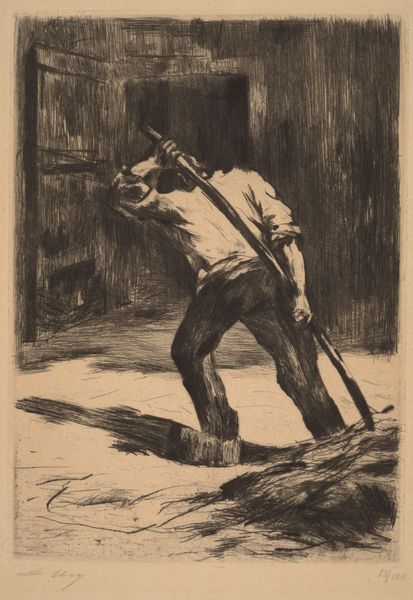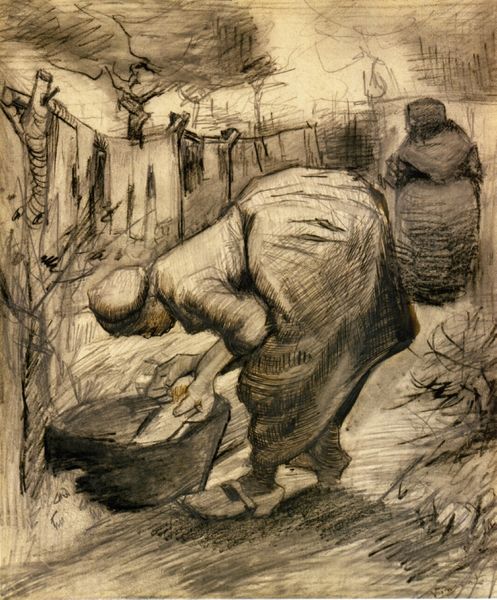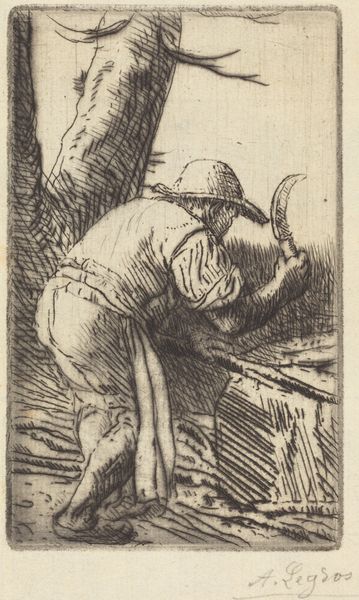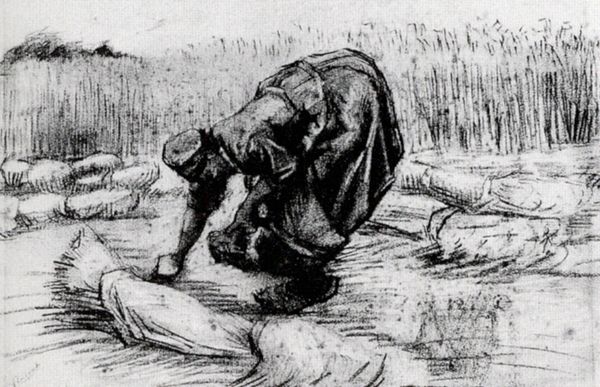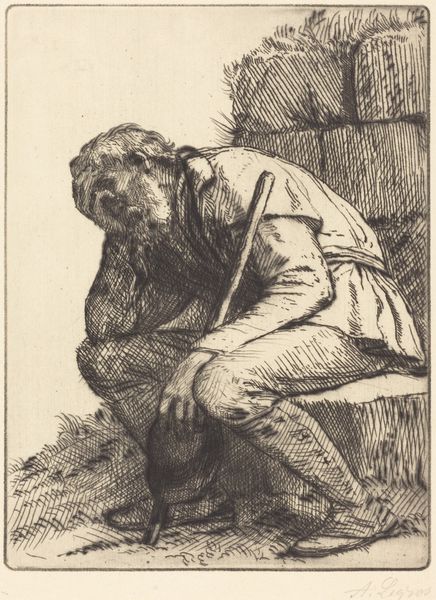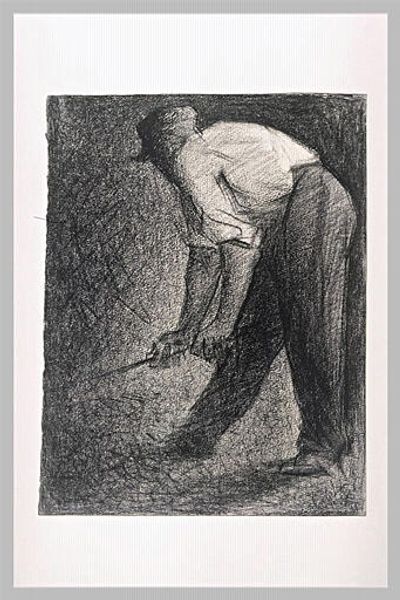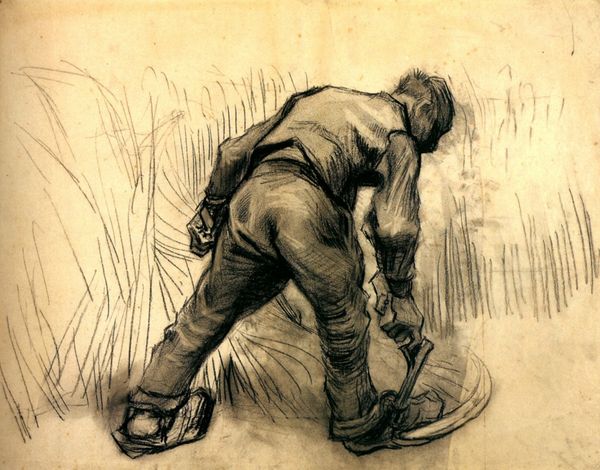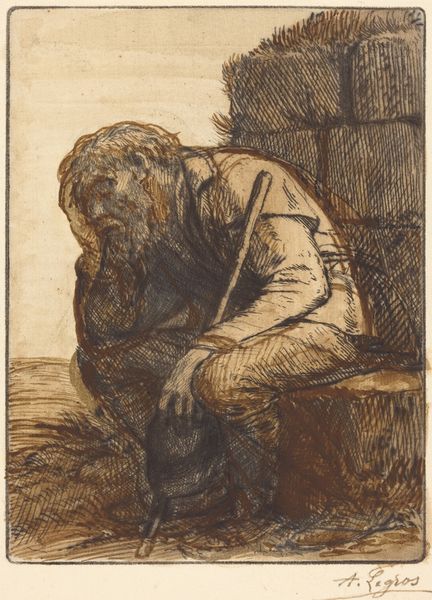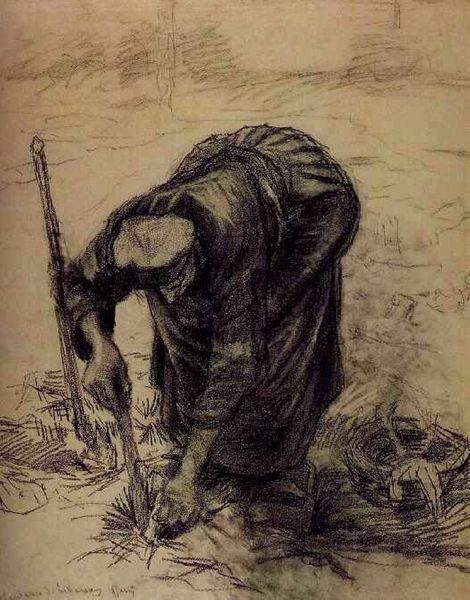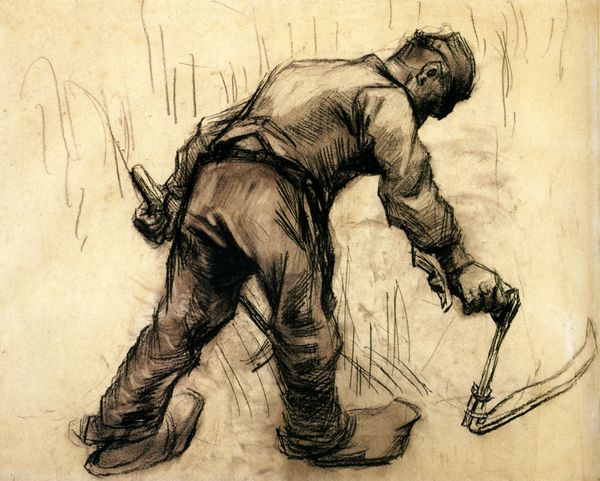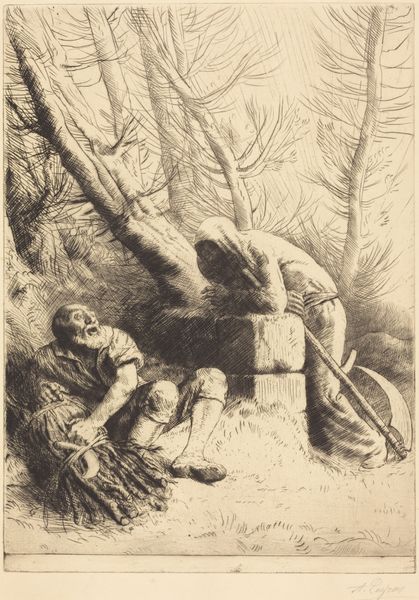
drawing, charcoal
#
drawing
#
narrative-art
#
pencil sketch
#
landscape
#
charcoal drawing
#
charcoal art
#
oil painting
#
pencil drawing
#
charcoal
#
post-impressionism
#
realism
Dimensions: 55.5 x 30.5 cm
Copyright: Public domain
Curator: This is Vincent van Gogh’s “Reaper with Sickle (after Millet),” created in 1881 using charcoal and pencil. It’s currently held in a private collection. Editor: It has a certain humility. The bowed figure, almost engulfed by the wheat field… It feels less like observation and more like a lived experience, translated into this study of brown tones. Curator: It's directly inspired by Millet's work, part of Van Gogh's larger project of studying and copying other artists to find his own voice. The reaper archetype is obviously very ancient, the symbol of harvesting having profound significance. Think of Cronos. Editor: You see, that stooping pose is key here. Van Gogh emphasizes the line of the back, the bend of the legs...It’s the fulcrum of the entire composition, creating a clear spatial depth, and giving that posture preeminence as the most important part of the sketch. Curator: Right, but let’s think about that symbolism: this image evokes themes of life cycles, mortality, and humanity's connection to the land, all magnified by the looming reaper. The flock of birds hints at vulnerability. We become increasingly aware that Van Gogh often uses avian imagery to hint at something deeper. Editor: Vulnerability? Or vitality? Those birds could be a formal device, simply adding another, lighter tone and scattering detail across the upper register of the image to counter the dark, heavily worked figure. Curator: Perhaps both? Van Gogh was never simplistic. And the fact that this is "after Millet" is crucial. It is cultural memory being reworked to his own artistic vision, the Post-Impressionist style applied to social realism—the everyday labour transformed by emotional depth. Editor: Well, whichever perspective we embrace, the undeniable energy in this charcoal sketch pulls you right into the frame. It stands alone formally and symbolically, whether or not you’re familiar with Millet. Curator: Exactly, it offers multiple interpretive paths, but at its core remains a timeless image of labour and nature. Editor: Yes, it’s truly something to witness his interpretation of another master—seeing Van Gogh himself in this brief but dynamic rendering.
Comments
No comments
Be the first to comment and join the conversation on the ultimate creative platform.



